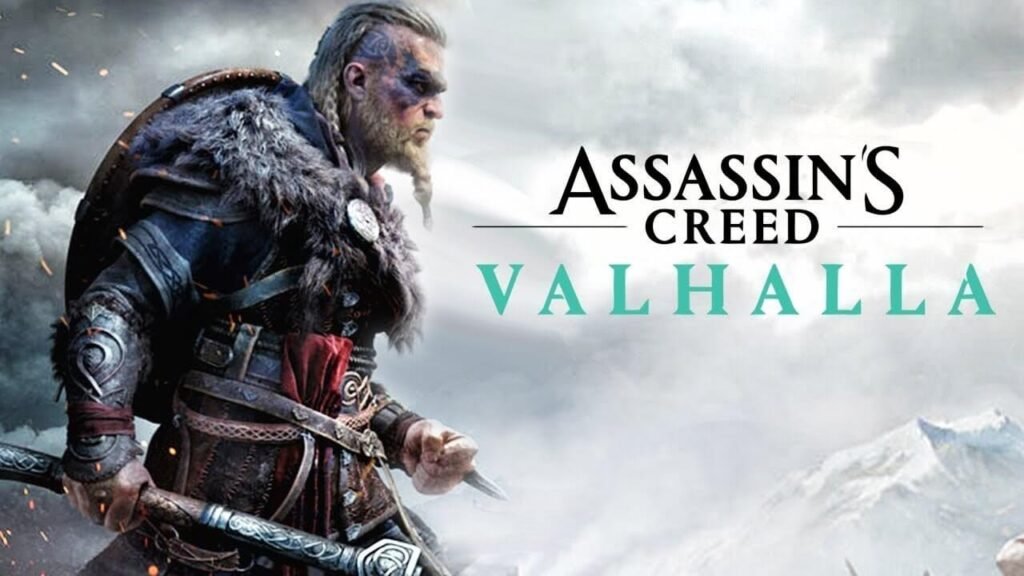
Like Assassin’s Creed Odyssey and Origins before it, Assassin’s Creed Valhalla continues the series’ evolution into a full-fledged open-world RPG. However, Ubisoft has reintroduced some of its stealth-action roots, which makes this approach more appealing. Valhalla’s primary focus is on its vast and beautifully rendered recreation of Dark Ages England, a world brought to life with stunning detail that I rarely encounter. It’s a remarkable showcase for the Xbox Series X, running in 4K at nearly 60 frames per second.
While the game introduces some new progression systems that don’t quite hit the mark and comes with a fair share of bugs, it offers an overwhelming number of activities to explore and discover, all enriched by its atmospheric storytelling.
The main narrative follows Eivor, their brother Sigurd, and the allies and foes they encounter as they leave the icy fjords of Norway in search of wealth and glory in England. The story is darker and more grounded than I expected, featuring tough decisions that left me reeling. The performances from the main characters are intense and haunting. This expansive world is filled with conflicts among Danes, Norse, Saxons, Britons, Picts, and the influences of Christianity, pagan mysticism, and Norse mythology, with a fantastic interpretation of Asgard that I can’t wait for everyone to experience.
The dynamic between the Assassins and the Order of the Ancients begins subtly, almost optionally, gradually introducing Eivor to the Assassin’s ways with admirable restraint before the usual conspiratorial twists take hold. However, the focus remains primarily on Eivor’s efforts to forge alliances across England’s four kingdoms and numerous shires.
Many of Valhalla’s standout moments occur as you lead your Viking clan in raids against the wealth-laden churches and monasteries of England, gathering resources to build your new settlement, which functions as both your home base and quest hub. The drama of raiding is visceral, with thatched-roof huts igniting in flames as priests and villagers flee in chaos.
Assaults on fortresses and castles elevate the medieval experience further, providing climactic payoffs for lengthy quest chains. Breaking through defenses and making your way to the inner keep is a thrilling spectacle.
Visually, Valhalla is possibly Ubisoft’s most stunning and detailed open world yet. I often found myself lost in the beauty of the environment, whether it was a sun-drenched river bend or the mist rolling across swamps and forests, all set against the remnants of the Roman Empire. The Xbox Series X truly shines here; the draw distances are incredible, allowing for impressive long-range shots, and load times are nearly nonexistent.
While Valhalla maintains the open-world formula of Origins and Odyssey, it introduces new systems that can be both good and bad. The skill progression system, for example, felt off for two reasons. First, you have to spend points to uncover the next cluster of unlockable skills without knowing what they contain or if they’re worth pursuing. Secondly, most of these skills are passive, enhancing combat rather than introducing new abilities. Although many are useful and even essential, most feel like mundane stat upgrades.

Crucial abilities were hidden throughout the world in “Books of Knowledge.” If you don’t actively seek them out, you might miss significant skills like the bull rush or infamous kick for hours. As a result, the first 10 to 15 hours felt underwhelming compared to Odyssey’s dynamic style. However, the combat eventually became fluid, brutal, and flexible, even reinstating instant assassinations for those who prefer stealth. It just takes too long to reach that level of complexity, which may make the initial fights feel bland for seasoned players.
On a brighter note, the inventory and quest systems have improved significantly. There’s less loot in Valhalla, meaning you won’t be inundated with countless low-level weapons. Instead, you find different variations of weapons, each with minor stat differences and passive bonuses. If you find one you like, you can invest in it and upgrade its quality, making it a more rewarding experience.
Another notable improvement is the increased flexibility in discovering side quests and activities. Ubisoft has moved away from cascading side quest lists in favor of color-coded points of interest on the map, marking mysteries, wealth, and artifacts. This often leads to quirky and lighthearted side stories, like a whimsical encounter with a cat lady or challenges involving mystical powers or bandit ambushes. This shift provides a welcome contrast to the darker tones of the main story quests, allowing players the freedom to choose their path.
However, no matter where you go in Assassin’s Creed Valhalla, expect to encounter some quirks. The game is plagued by numerous bugs and technical hiccups, ranging from humorous to frustrating and even game-breaking. I experienced hard crashes, unbreakable items, glitchy staircases, odd AI behavior, erratic rowboats, and various quest bugs.
In summary, while Valhalla is undeniably buggy, these issues felt minor compared to the hours of exploration and discovery I enjoyed. After 60 hours, I found Assassin’s Creed Valhalla to be a bold and stunning entry in the series that delivers on the long-awaited Viking era and the complex political landscape of Dark Ages England. It strikes a balance between historical exploration, captivating conspiracy, and subtle mysticism, all against a backdrop of a focused, grounded story.
The fresh approaches to loot and quest systems help maintain fluidity, although the progression system could use some refinement. The game does have a larger-than-usual number of bugs, but despite its imperfections, the rugged and brutal portrayal of Scandinavian expansion is as memorable and rich as any Assassin’s Creed experience, making excellent use of the new consoles.